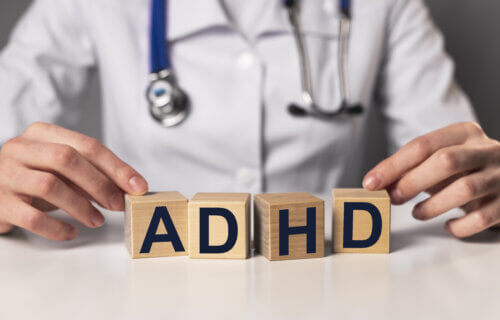Research has soundly disproven the persistent myth that kids with attention deficit hyperactivity disorder (ADHD) “grow out of it.” Now, new research is revealing an alarming aspect of ADHD – adults can “grow into it.” It’s looking like the culprit causing this is man-made – a product of the technological extravaganza we currently live with. Simply put, you can acquire ADHD.
ADHD is a mental health disorder that usually begins in childhood, with a short attention span, compulsive and impulsive activity, and social problems being the typical symptoms. Most kids with ADHD will still have impairments as adults and will need some form of supportive management.
ADHD in adults looks different from the condition in children, including issues like:
- Poor time management
- Disorganization
- Fits of rage
- Forgetfulness
- Lack of motivation
- Restlessness
- Anxiety
- Fatigue
- Poor self-image
- Dysfunctional relationships
These symptoms vary from mild to very severe.

Concerningly, diagnoses of ADHD are becoming more common among adults. The number of adults with ADHD has spiked from 4.4 percent in 2003 to 6.3 percent in 2020.
A study published by the Journal of the American Medical Association shows that frequent digital media use involving social media, gaming, texting, and streaming movies, music, or TV increases an adult’s risk of developing ADHD symptoms by about 10 percent. Other research supports that finding.
“It is legitimate to look at the possibility of acquired attention deficit,” says John Ratey, a physician, neuropsychiatrist, and an associate clinical professor of psychiatry at Harvard Medical School, in an article in National Geographic.
Ratey notes that people today feel pressure to multitask and are bombarded by constant technological stimulation and screen addiction.
“These could potentially lead to a shorter attention span,” Ratey adds.
The link between using technology and attention problems could also be attributed to the fact that people who constantly use technology take fewer breaks to allow their brains to rest in their default mode.
“For a long time, the association between ADHD and heavy online use was a chicken-and-egg question in our field: Do people become heavy online consumers because they have ADHD and online life betters suits their attention span, or do they develop ADHD as a result of excessive online consumption?” explains Elias Aboujaoude, a behavioral psychiatrist and chief of the Anxiety Disorders Section at Stanford University School of Medicine.
Clinical experience and research increasingly support that acquired ADHD is the result of excessive technology use. However, hormonal changes in menstruation and menopause can bring out hidden ADHD symptoms as well. Stress, side-effects of other medications, insufficient sleep, anxiety, depression, sleep apnea, age-related cognitive changes, and thyroid disease can mask or unmask ADHD.

If you have concerns about your mental health status, the first and arguably most important thing you need to do is get a thorough evaluation. Start with your primary healthcare provider for a physical examination. Primary providers can assess mental health, but most are referring their patients to psychologists for formal rating scales to nail down the diagnosis. Some refer to psychiatrists to add their assessment and manage the condition, if it’s found to be present.
ADHD can be a devastating diagnosis because it affects every aspect of life. Treatment may include medication and/or psychotherapy – usually cognitive behavioral therapy (CBT). CBT is a short-term form of behavioral treatment. It helps people problem-solve. CBT is also about understanding the links between beliefs, thoughts, and feelings, and the behaviors that follow.

This is a very unhelpful article, ADHD is not acquired nor do people “grow into it.” It is a neurodevelopmental condition from a very young age. This article serves nothing but to increase stigma towards the condition.
ADHD and ADHD symptoms are different, stop using ADHD symptoms to describe behaviours. This belittles the condition that many struggle with throughout their life.
A key sentence from the research “Further research is needed to determine whether this association is causal.” You’ve forgotten to add this to your article to clarify that this research isn’t conclusive.